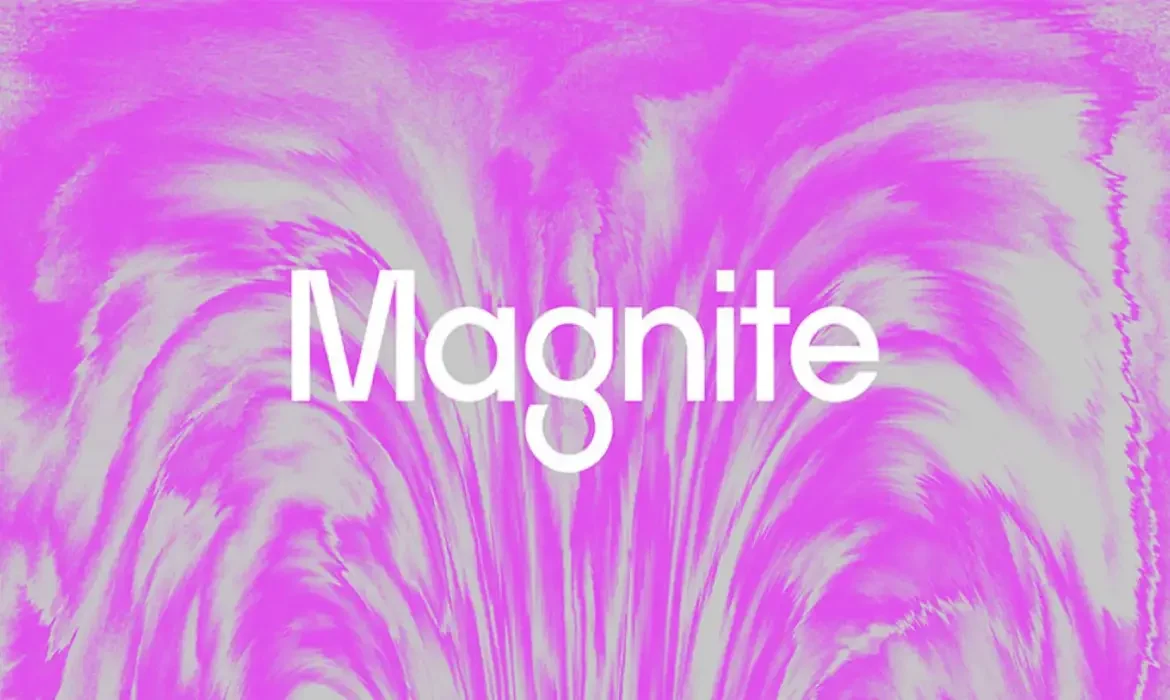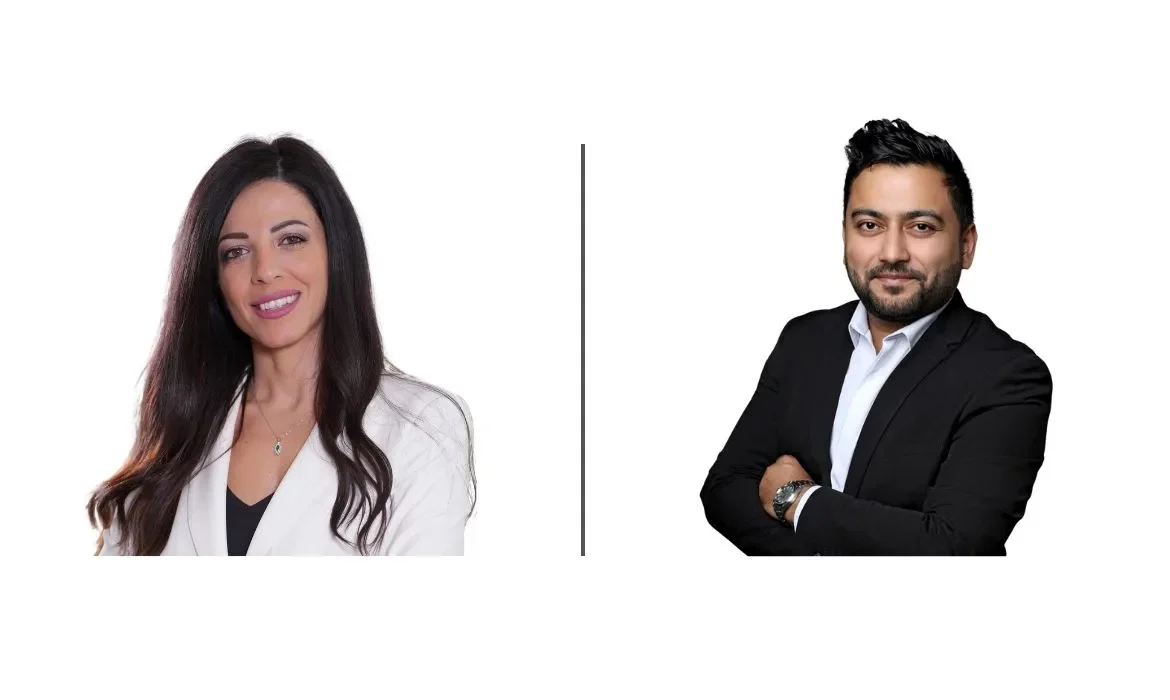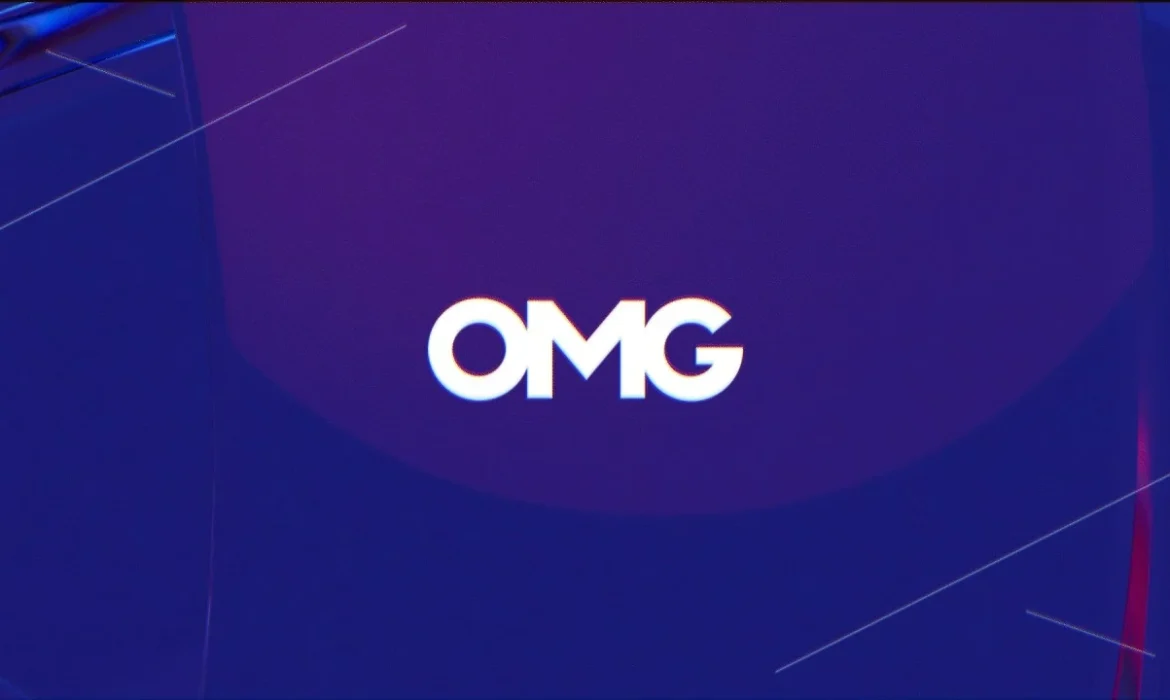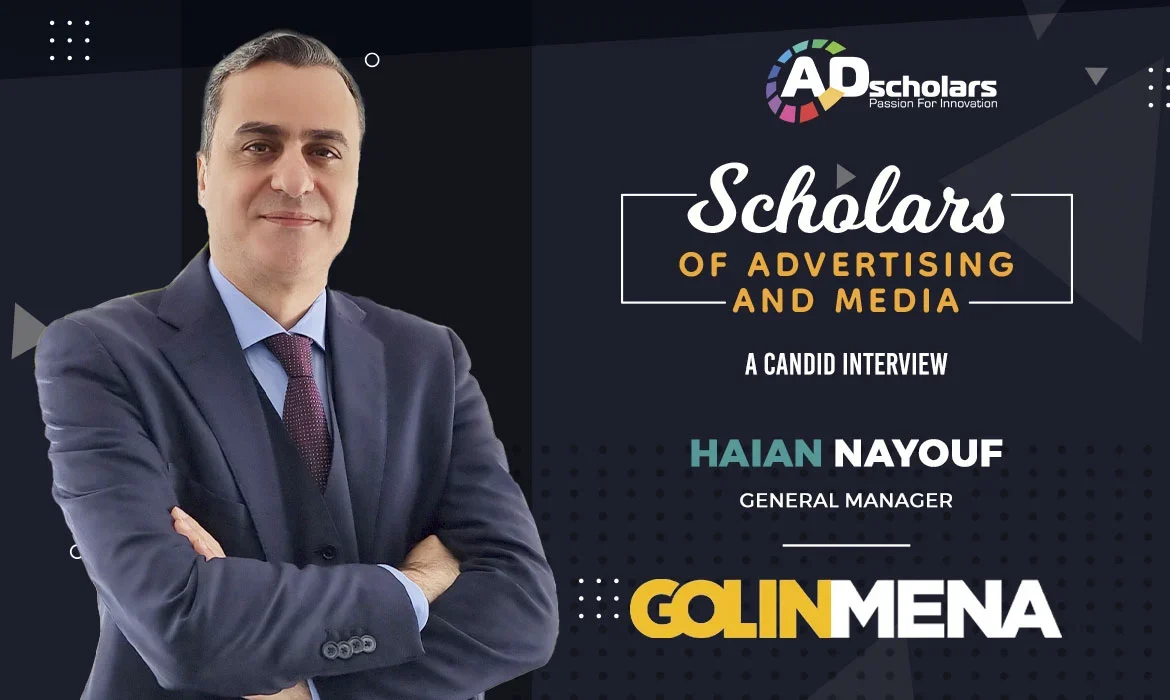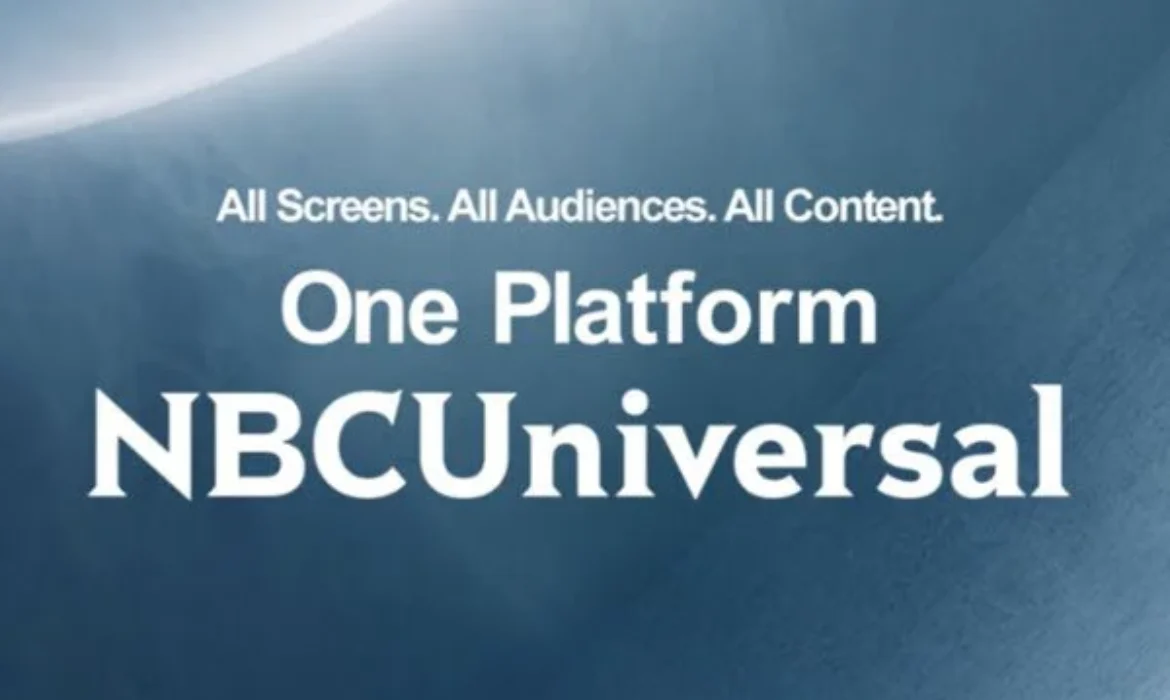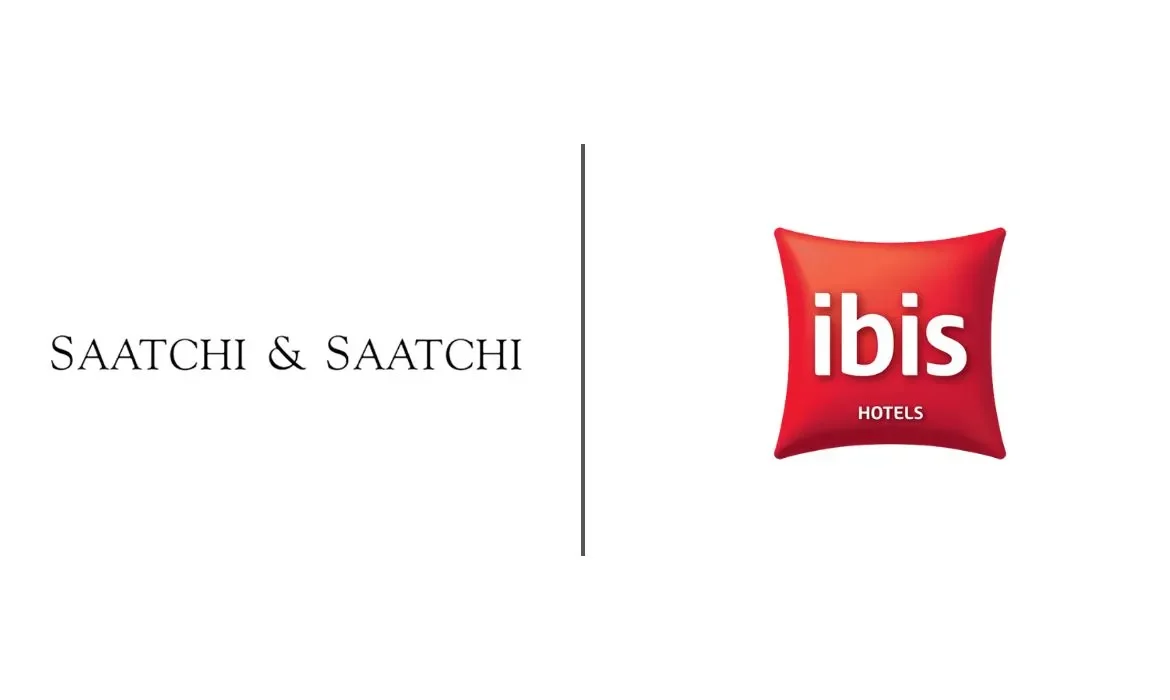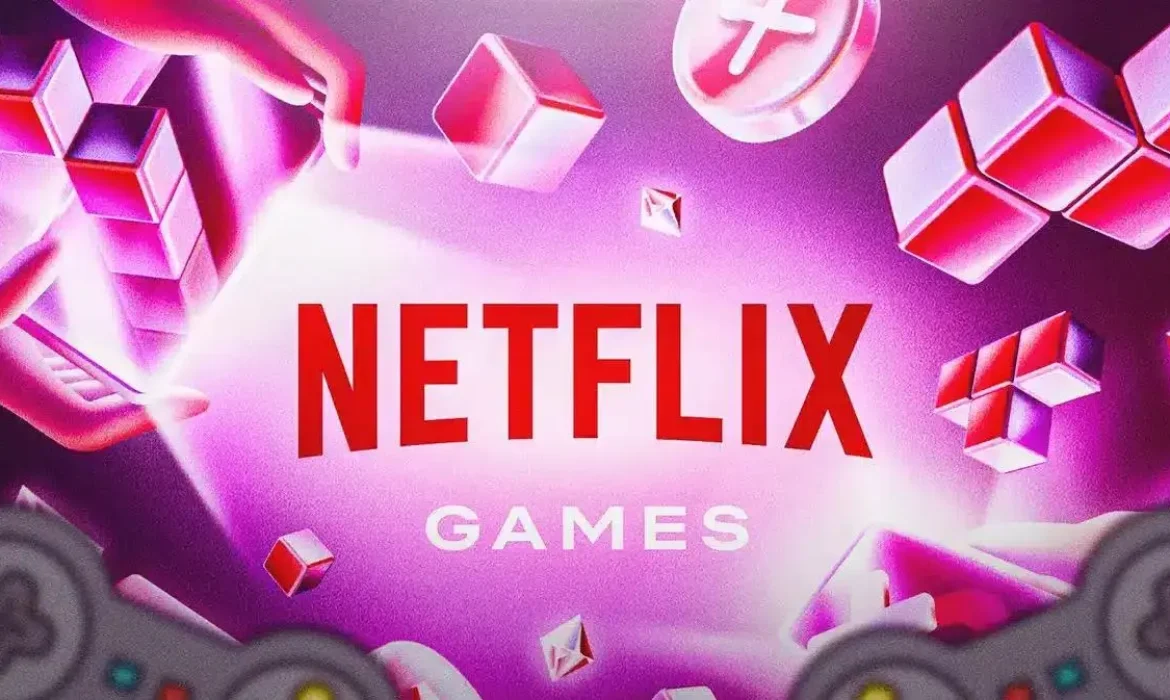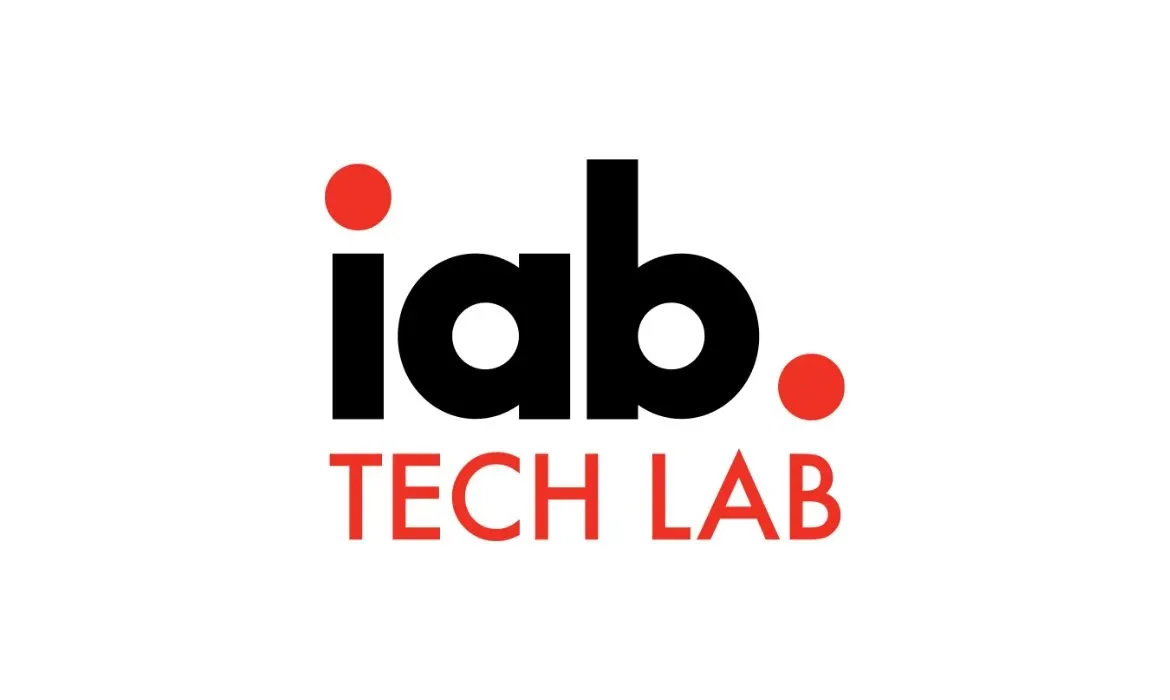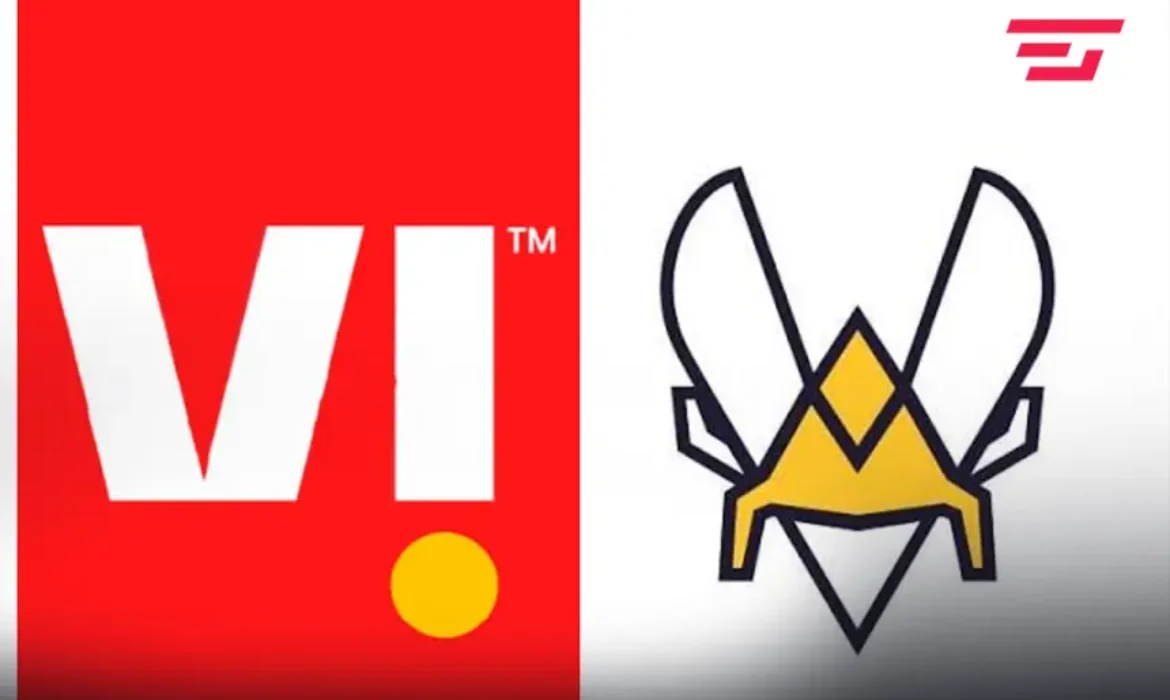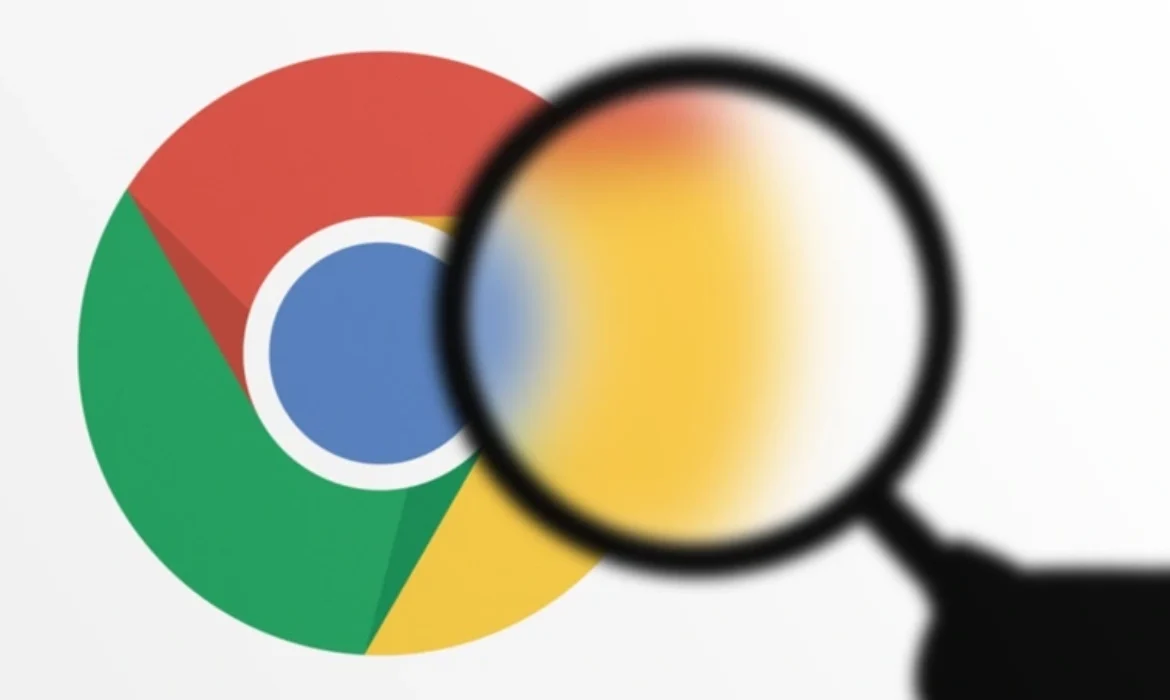Magnite Bags Tennis Australia for Programmatic Advertising
Magnite, the world’s largest independent sell-side advertising company, revealed that it bagged Tennis Australia for programmatic advertising. Tennis Australia has chosen Magnite’s Demand Manager as their Prebid header bidding wrapper solution. For the first time, and in advance of the Australian Open, Tennis Australia will monetize its display and mobile inventory programmatically by utilizing Magnite’s DV+ platform and implementing Demand Manager exclusively as their wrapper solution.
Australian Open taps Magnite for programmatic advertising
The Australian Open is one of the four major tennis championships held annually, and Tennis Australia is the organization that oversees tennis in Australia. It also hosts several international tennis competitions. For 9.5 million users, Tennis Australia’s “AO Digital” website and mobile app offer a variety of content all year long. With over 900,00 spectators in 2023 alone, the Australian Open is Australia’s biggest and most prosperous international sporting event. It keeps shattering attendance records. Every year, the event brings more than $375 million in economic benefits to Melbourne and reaches over one billion households worldwide.
Addressing Tennis Australia’s programmatic needs
In the world of digital advertising, the collaboration between Magnite and Tennis Australia represents a strategic step forward. Tennis Australia’s programmatic advertising needs have led to the adoption of Magnite’s Demand Manager, which is in line with an industry trend toward more advanced and effective ad monetization tools. Tennis Australia can anticipate higher ad revenue by using a Prebid header bidding wrapper because it creates a competitive auction environment where multiple ad exchanges bid in real-time for advertising space.
Read More: Vibrant Media Bags INR 100 Crore Media Account for Jio-bp
The announcement comes at a critical time
Additionally, the time frame of this implementation is critical, as it occurs just before the Australian Open. Tennis Australia can take advantage of peak user engagement and maximize the value of its ad inventory by capitalizing on the high traffic that occurs during a major event. This might create a precedent that other sports organizations would want to follow, upending established methods of advertising in the sports sector.
How the partnership benefits Tennis Australia
Tennis Australia will gain significant insight, flexibility, and control over header bidding operations by utilizing Demand Manager, Magnite’s header bidding wrapper services solutions. They will also be able to optimize Prebid per their unique needs, which will increase monetization. In a broader sense, these developments in programmatic advertising technologies may result in higher profits for content providers and a change in the way advertisers distribute their budgets, favoring digital channels that offer high levels of engagement and the ability to reach specific audiences.
Here’s what they said
Yael Milbank, Managing Director, ANZ at Magnite said
We’re excited to be working with Tennis Australia to help them maximise the value of their inventory across various formats. We look forward to helping them drive operational efficiencies through our technology and supporting them in their efforts to scale their programmatic advertising strategy during and beyond the Australian Open.
Read More: MAGNA and OpenAP Partner for Data-Driven Video Capabilities; Magnite Opens New Office in India
MCN Names Lara Arbid as CEO of Magna Global MENAT, Initiative MENAT
The Middle East Communication Network, or MCN, has named Lara Arbid the CEO of Magna Global MENAT and Initiative MENAT. The announcement follows Bassem Massoud’s departure from the network after 15 valuable years of service.
Lara Arbid appointed as CEO of Magna Global and Initiative MENAT
Arbid became the first female general manager of a Saudi Arabian media agency when she joined MCN Riyadh in 2014. She oversaw Magna KSA for several years before relocating to Dubai and taking on the role of regional managing director at Initiative & Magna.
Read More: Starcom Middle East Appoints Donnacha Kinsella as Head for Saudi Arabia
Other promotions
With Lara’s appointment as CEO, Santadip Roy will take on the role of Regional Managing Director at Magna Global. Having joined MCN in 2018, Roy is a seasoned professional who gained recognition for his contributions to the company in the role of Regional Head for Digital, Data, and Technology and Business Solutions.
Here’s what they said
Ghassan Harfouche, Group CEO of MCN, said
Given her solid background, passion, drive and deep expertise, I’m confident that Lara will thrive in her new role.
Lara Arbid on her appointment as CEO of Initiative and Magna Global MENAT added,
I am passionate about our people, product and partners, and I really look forward to delivering success in 2024 and beyond.
Read More: Publicis Groupe South Asia Appoints Amitesh Rao as CEO, Leo Burnett South Asia
OMG MENA and The Neuron Partner to Transform pDOOH Advertising
Omnicom Media Group MENA (OMG MENA) has partnered with The Neuron to enhance its programmatic digital out-of-home (pDOOH) offerings in the Middle East, marking a significant shift in the out-of-home (OOH) advertising landscape. Incorporating digital screens initially, and now programmatic technology, out-of-home (OOH) is fully adopting its digital revolution. Through the partnership, OMG MENA will be able to plan, schedule, and oversee campaigns in over 80 countries by utilizing the distinctive features of The Neuron’s specialized demand-side platform (DSP). This strategic partnership should usher in a new era of audience engagement and digital innovation in the medium.
Programmatic DOOH market
Through this collaboration, OMG MENA and The Neuron hope to develop greater audience engagement and raise the bar for digital innovation in OOH advertising. Because more successful and engaging campaigns are made possible by developments in data analytics and audience measurement, the global programmatic digital OOH (pDOOH) market is expected to grow rapidly. In addition to remaining stable in terms of brands’ media spend in the Middle East and North Africa (MENA), at about 20% of the total, outdoor advertising is already seeing about 50% of its revenue go to digital sites, compared to the global average of 40%. There will be significant advancements in it.
Leveraging The Neuron’s DSP for pDOOH advertising
The Neuron is a specialized DSP for pDOOH advertising. It is a sector of outdoor advertising that is undergoing an unparalleled rise. This is accredited to notable expansion and technological breakthroughs. It is designed specifically to give advertisers comprehensive insights into campaign performance. Furthermore, it will allow them to evaluate the impact and return on investment (ROI) with unmatched precision. The Neuron was created with more capabilities and a specific focus on outdoor use, in contrast to the majority of current DSPs, which are designed for small screens and the open web rather than OOH.
With 1.35 million digital sites in its inventory, offering over 60 billion impressions every week across more than 80 countries, it assists users in planning, scheduling, and tracking their ads. The billboards are located in a range of places, including office buildings, retail stores, transportation, entertainment, health and beauty, and healthcare.
Read More: Yahoo Partners with VIOOH for prDOOH and Twilio for First-Party Ad Reach
Digital innovation in pDOOH advertising
With the partnership with The Neuron, Omnicom Media Group will be in a great position to use programmatic technology. It will be able to further enhance the sophistication of digital OOH campaigns. To reach target audiences, planners can find inventory available across local and international ad markets. It will be possible with the aid of the platform’s sophisticated planning tools and targeting features. Its auto-bidding algorithms are made to maximize DOOH purchasing to reduce costs. Optimizing this procedure programmatically has been shown to improve operational effectiveness. Programmatic outdoor matches OOH advertising with contemporary client and agency expectations. It provides superior proof before and after the buy in terms of data, measurement, and attribution.
Transforming Analysis, Targeting, and Planning
OMG Mena will be able to greatly improve their planning, inventory selection, creative delivery, and targeting. It will utilize The Neuron’s technology. In-depth campaign metrics and state-of-the-art capabilities that position agencies at the forefront of newly emerging outdoor advertising channels are other benefits of the partnership. With this partnership, OOH advertising will take a significant step closer to becoming fully digital. It will potentially usher in a new era of more effective and efficient advertising.
Here’s what they said
Chris Solomi, Chief Digital Officer of Omnicom Media Group MENA said,
With this partnership, we will be able to deliver even better results to our clients from their Out of Home campaigns thanks to better more advanced planning, inventory selection, creative delivery and targeting not to mention more advanced campaign measurement. pDOOH is a huge growth area for outdoor advertising and this partnership allows us to position our agencies at the forefront of emerging channels. This is a major contribution to the digital transformation of what was a static medium, as we now have a seamless, user-friendly way to launch dynamic campaigns, making programmatic DOOH a reality for advertisers. With The Neuron, we will have access to local and global audiences, benefit from precision targeting, including with custom audiences and using geo-location, as well as retargeting. The customizable triggers are also a very interesting feature. What’s more, as pDOOH lowers the entry point for advertisers who might be put off by high prices, it will bring new brands into the market, without having to draw from their offline media budgets.
Hussein Khader, Founder and CEO of The Neuron added,
We are immensely proud and thrilled about our partnership with OMG MENA. This agreement unites two entities that are deeply committed to harnessing the transformative impact of technology in outdoor advertising. Our collaboration with OMG MENA, especially in handling cross-border campaigns, is not just about reaching new heights in planning and execution, but it’s a journey towards pioneering efficiency and effectiveness in the digital advertising realm. Born and nurtured in Jordan, The Neuron has made significant strides in global markets. Receiving acknowledgment and forming an alliance with a prestigious industry leader like OMG MENA in our home region is not just an honor; it’s a testament to our shared vision and commitment to excellence in the ever-evolving world of advertising.
Read More: Perion Acquires DOOH Platform Hivestack for USD $100 million
Golin MENA’s Haian Nayouf on Evolving Communication in the Middle East
Haian Nayouf, a General Manager of Golin MENA is a seasoned professional in MENA’s communications realm with a diverse journey spanning over two decades. From journalism to steering strategic communications for the UK Government, he brings adaptability and experience. He is a leader navigating the dynamic media landscape, emphasizing meaningful connections and
strategic insights.
In this exclusive interview, he masterfully intertwines his wealth of experience, adaptability, and steadfast dedication to sculpting the narrative of communication in the Middle East.
Would you mind sharing with us your professional journey across various media fields you have worked in and your role as General Manager of GolinMENA over the last two decades?
For over two decades, I’ve embraced opportunities to learn and grow, fueled by the exceptional colleagues and friends I’ve worked with along the way. My journey began as a regional correspondent for five news outlets, honing my skills in print, radio, and online mediums. This laid the foundation for my six-year stint at Al Arabiya TV and its renowned online platform, Al Arabiya.Net. Seeking a different lens, I then transitioned to strategic communications, leading the UK Government’s Arabic Media and Communications Hub in the Middle East (based in Dubai) for eight years, including serving as Arabic Deputy Spokesperson for two years.
Drawn to the dynamic world of PR, I shifted gears, working with global agencies like Edelman before joining Golin MENA in February 2022. In July 2023, I was truly honored to be appointed General Manager of Golin MENA in the UAE by Horizon Group. Now, I have the privilege of working with a talented team across diverse sectors, continuing my journey of learning and professional growth.
As a communication professional, you’ve worked in media outlets, agencies, and even in different government sectors. Has that experience helped you in your current role in terms of strategic decision-making?
Definitely! Effective decision-making, whether in client servicing or maintaining high-quality communications work across various domains, demands three key factors: deep alignment with the rapidly evolving media landscape, a thorough understanding of audiences and the aspirations of new generations, and a profound grasp of public policies and geopolitical situations. Hence, I feel incredibly fortunate to have launched my communications career in the expansive world of strategic communications, which is broader than the realm of PR. This journey has allowed me to make informed decisions that drive successful outcomes for clients and business partners.
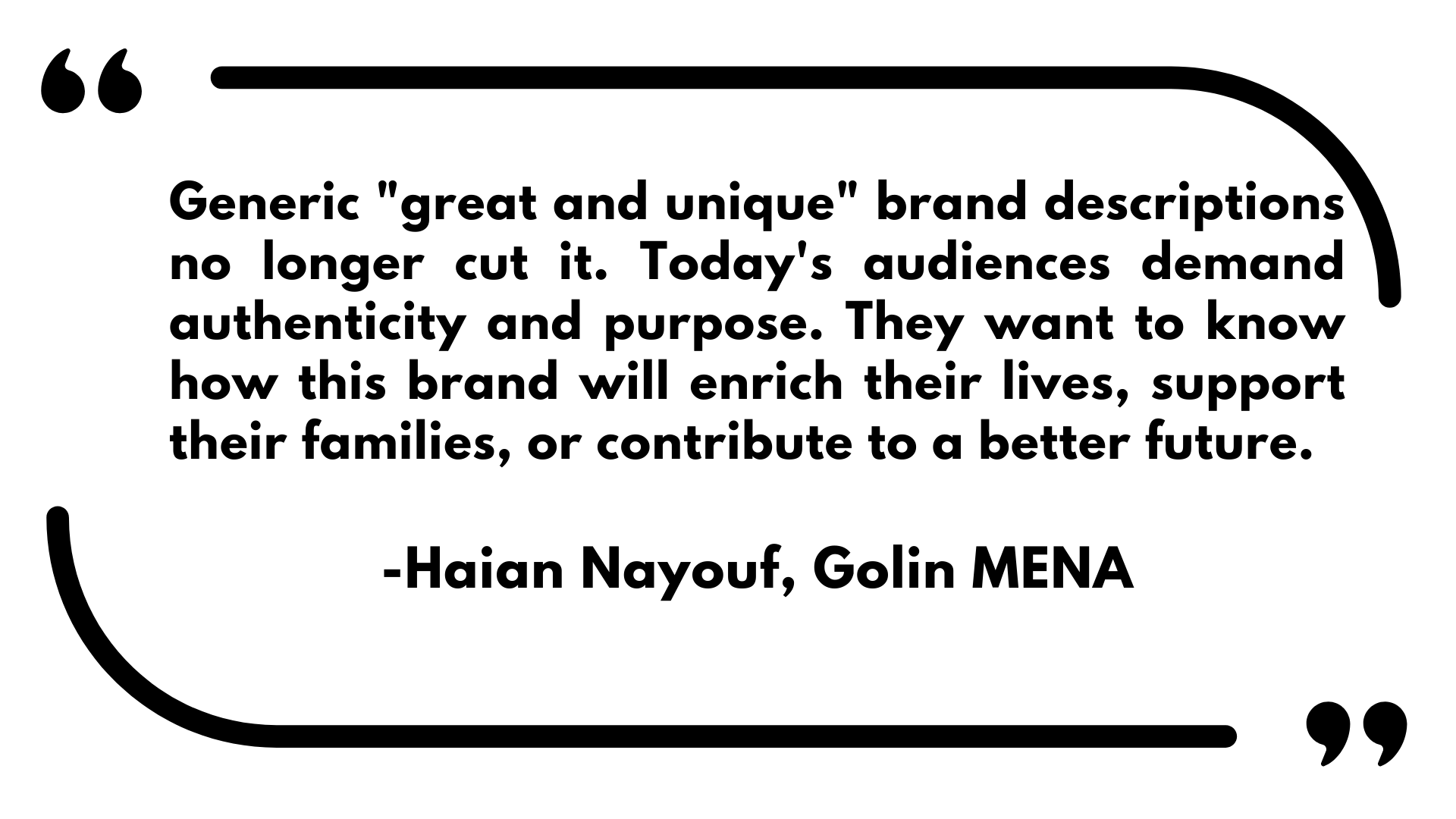
How has the PR landscape evolved since the time you started working in the industry? What upcoming trends or changes have you predicted and how are you working towards them?
My extensive background in strategic communications and its tools has provided me with a unique vantage point to observe the PR landscape through a wide-angle lens. This perspective, coupled with the rise of social media in the region after 2010 and the emergence of new, hyper-segmented generations with distinct aspirations, has led me to believe that the PR industry in the ME region needs to shift towards a more strategic communication approach. This shift is crucial to adapt to the rapidly evolving landscape, and the possibilities are endless. For example, we can weave engaging data narratives that go beyond messaging, showcasing impact through case studies, human-interest stories, or interactive visualizations. These stories, coupled with a focus on tangible outcomes like improved brand awareness, customer engagement, or policy change, will lead to truly solid results—not just outputs.
It is safe to say the “Oh! Message” app is synonymous with Haian Nayouf. How did you come up with this idea? Seeing its success in Dubai, what are your plans for it in the future?
In September 2021, Dubai’s newspapers hailed “Oh! Message” as a “technological achievement from Dubai to the world.” My partner, Mohammed Othman, and I launched Oh! Message as the world’s most private messaging app. We envisioned it as the Middle East’s first chat app built by Arab expertise and boasting cutting-edge privacy features. Oh! Message pioneered several privacy features, such as hidden online statuses, which a global app only adopted a year later. We’ve successfully completed the first phase of our development plan and are actively engaged with potential Gulf investors to secure funding for the remaining stages. Oh! Message remains the undisputed champion of privacy, thanks to its unique feature of complete in-app message destruction, guaranteeing zero server storage.
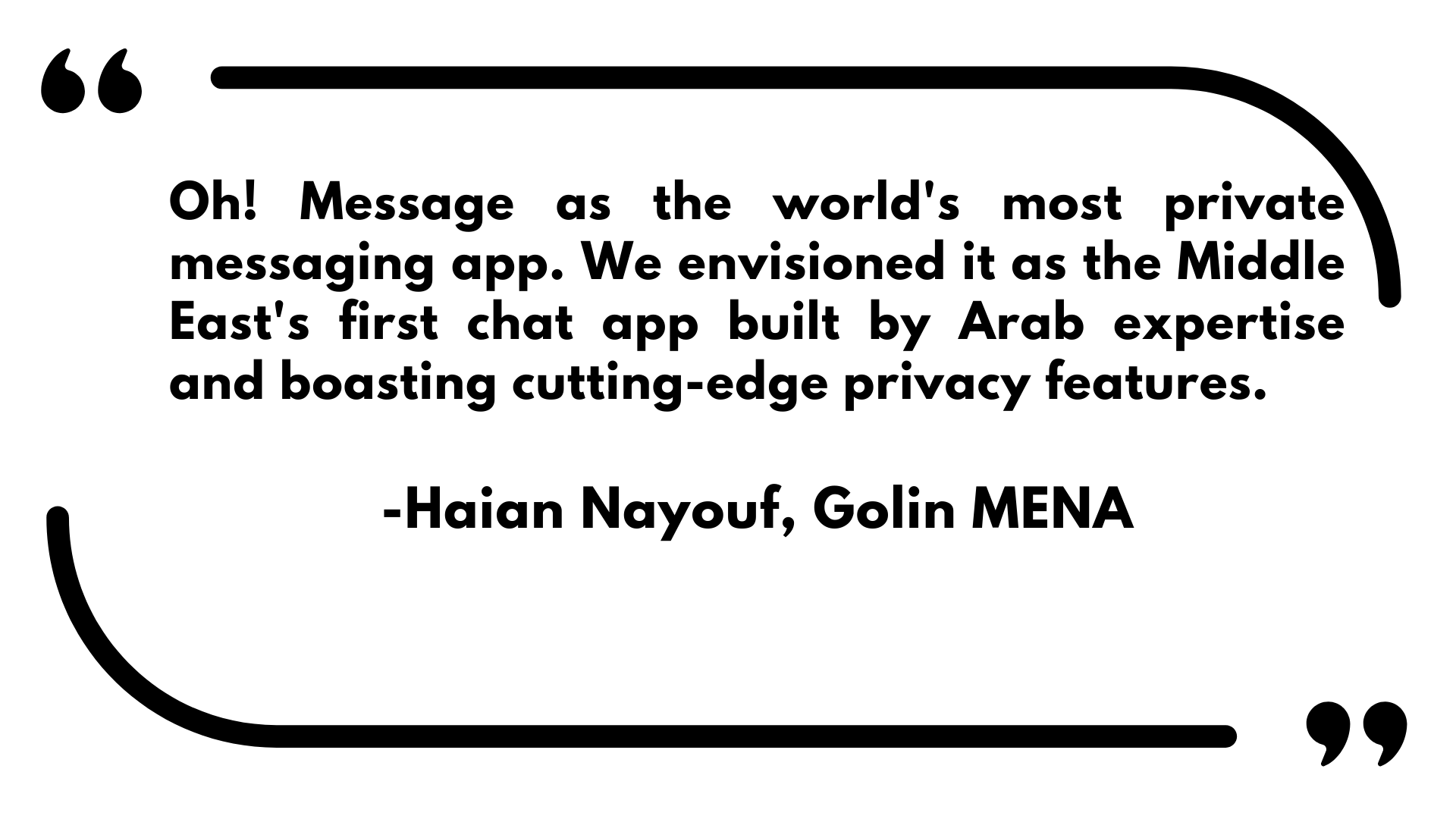
As mobile and internet services are more accessible in the MENA region, what is your take on the growing concern about data privacy?
Addressing this question from the perspective of an entrepreneur and co-founder of a privacy-focused startup, I believe it’s crucial to raise awareness among users and advocate for stronger data protection. Recently, a funder suggested closing our startup, arguing that it doesn’t provide a service like delivering food or gifts. In response, I posed the question, ‘What about privacy in chatting? Isn’t that a service and value needed in our daily lives?’ I am still awaiting a response. We need to amplify awareness about this: just as avoiding unhealthy food protects our physical health, privacy safeguards our well-being in the digital world.
The MENA media landscape has changed dramatically, as have people’s perspectives and openness. How have these changes been accepted by the audience compared to a few years ago?
The media landscape in our region has undergone a seismic shift. While some traditional outlets are proactively evolving to meet the digital age, new players emerge every day. This dynamic landscape, coupled with a surge in events, creates a bottleneck for brands and companies to stand out. Simply put, generic “great and unique” brand descriptions no longer cut it. Today’s audiences demand authenticity and purpose. They want to know how this brand will enrich their lives, support their families, or contribute to a better future.
The diversification of media channels plays a crucial role here, offering audiences a variety of information and fostering a growing appetite for authenticity, credibility, and transparency. In this social media-saturated world, audiences cross-reference stories across platforms, verifying information and exercising caution. This reflects heightened awareness and underscores the importance of reliable information in our era of media pluralism.
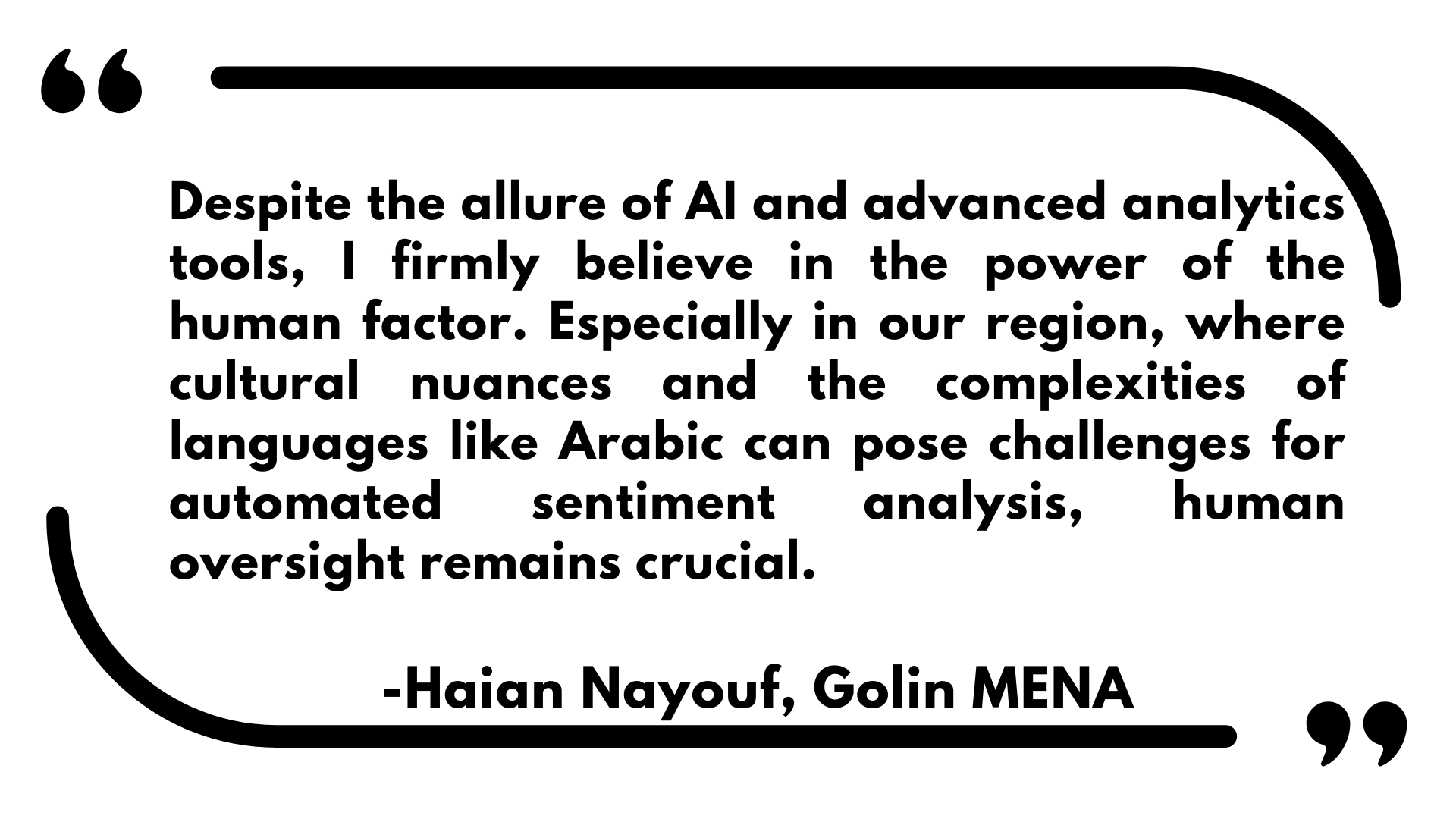
Let’s illustrate this with a simple example. Imagine a press release that informs us about a brand’s impact rather than simply describing its features. This shift from fluff to substance is crucial to resonate with today’s discerning audience.
CGI, artificial intelligence, and the metaverse are some of the technologies that are rapidly gaining traction in the Middle East. How has Golin MENA adapted to these changes? Will these technological advances change the PR landscape in a positive or negative way?
The region is on a technological spree, with recent studies pointing to surging demand for AI and automation solutions across various industries. For PR agencies, riding this wave of change is key to capturing audience attention and staying relevant.
The first step? Understanding the audience like never before. Data-driven insights unlock the doors to their behavior, sentiment, and preferences. Imagine customizing press releases and campaigns based on what truly resonates with the targeted audience. This precision targeting is the game-changer in today’s dynamic media landscape.
With the metaverse knocking on our doors, PR agencies are pioneering new frontiers of storytelling and engagement. GolinMENA has been a true trailblazer, organizing the region’s first press conferences within this immersive world.
However, despite the allure of AI and advanced analytics tools, I firmly believe in the power of the human factor. Especially in our region, where cultural nuances and the complexities of languages like Arabic can pose challenges for automated sentiment analysis, human oversight remains crucial.
Can you tell us about a few successful campaigns that you carried out and are close to your heart? How did you implement any learnings or successful strategies in future campaigns?
As the COVID-19 pandemic gripped the world, a beacon of hope shone from Italy. I was honored to volunteer with a groundbreaking, world-first campaign in Italy that focused on amplifying positive news and inspiring stories from the heart of the crisis.
I played a crucial part in amplifying the campaign’s voice by connecting it with top pan-Arab media outlets, ensuring that the message of hope and solidarity resonated across the region. This experience transcended traditional PR and news reporting. It was about building bridges and fostering understanding during a tumultuous time. Witnessing the power of communication to unite people across borders and cultures during such darkness was truly profound.
My participation in this impactful campaign solidified my belief in the vital role communication professionals can play on the frontlines. We can shape narratives, inspire unity, and offer a hand of hope even in the darkest of hours.
Additionally, at the London Olympics in 2012, I led a campaign in the Gulf region (launched by the UK government regional Arabic media and communication Hub in Dubai) focused on Arab athletes competing during the first Olympics to coincide with Ramadan since 1980. The campaign shed light on various aspects of the athletes’ experience, including the dedicated services provided to them
during the holy month.
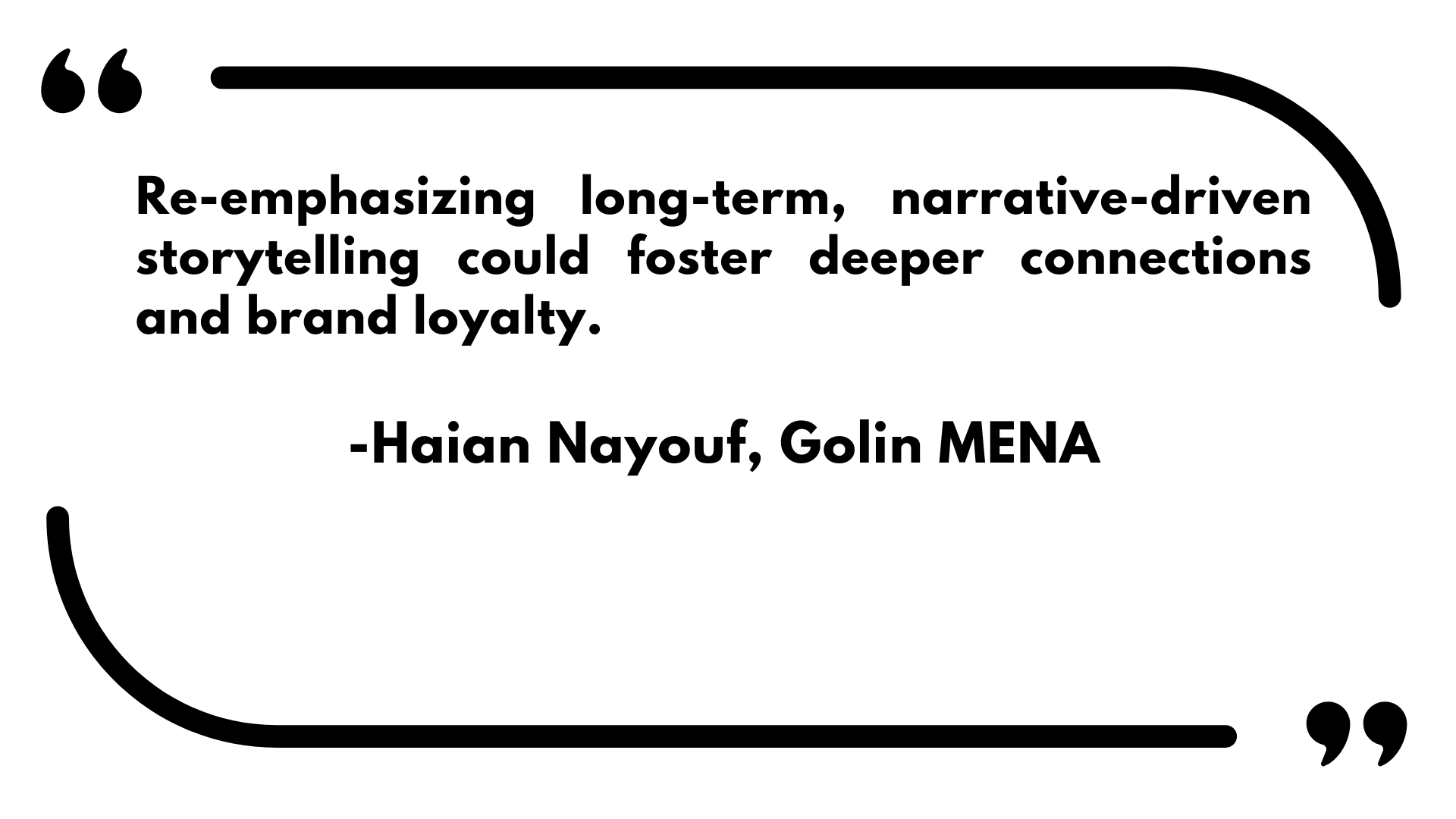
If there was one trend in the PR, media, or advertising industry that you would like to bring back, what would that be and why?
Of course, I won’t suggest bringing back fax machines—because nothing says cutting-edge technology like a piece of paper emerging from the jaws of a wheezing, ancient machine! Why rekindle the human touch? With the rise of automation and AI, there’s a risk of losing the human connection. Reviving personalized strategies and community outreach initiatives could rebuild trust and create more meaningful interactions with audiences.
Moreover, long-term storytelling is crucial. In today’s fast-paced digital world, campaigns often prioritize immediate clicks and engagement over building lasting relationships with audiences. Re-emphasizing long-term, narrative-driven storytelling could foster deeper connections and brand loyalty. Let’s recall classic campaigns that told evocative stories, creating strong emotional associations with the brand.
NBCU Streamlines Cross-Platform Advertising with One Platform Total Audience
Advertisers are looking for solutions that are both clever and effective in the age of cookie deprecation, fragmented media viewing, and an increase in ad-supported streaming options. With the full-scale launch of One Platform Total Audience, NBCUniversal revealed how it is redefining cross-platform, audience-based advertising for the media industry ahead of the Consumer Electronics Show (CES). It is the most recent iteration of its One Platform offering, reaching audience segments wherever they are with the use of sophisticated technology and sizable data sets. NBCU claims that its AI-powered planning and activation technology represents the most recent advancement in data and evolution, offering brands unduplicated reach via a single media buy across streaming and linear.
Streamlining Cross-platform advertising
The goal of NBCUniversal’s One Platform is to serve as a one-stop store for customized advertising. One Platform Total Audience is a brand-new AI-powered cross-platform media planning and activation tool that was introduced on January 8. The business promotes it as the next development in audience-based, cross-platform advertising. The solution develops a unified media plan for linear and streaming platforms using machine learning and predictive analytics to efficiently reach a brand’s target audience.
Using the company’s recent investments in automation and data, the offering allows marketers to leverage NBCU’s AI-driven planning and activation technology to deliver deduplicated reach through a single buy across linear and streaming. The technology allows for broad and transparent consumer targeting at the program level by leveraging advertisers’ and NBCU’s first-party data sets.
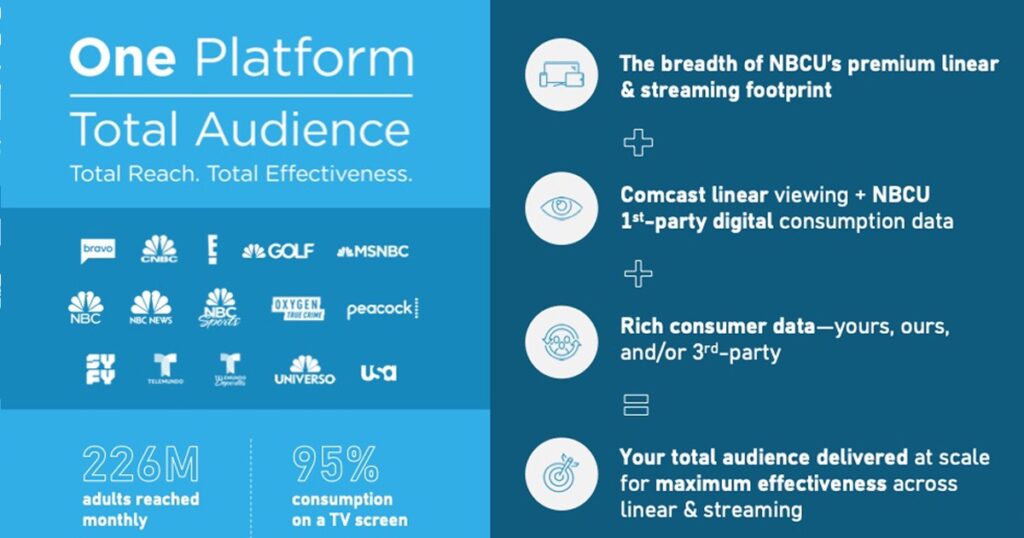
Image credit- AdWeek
What does it do?
With marketers in mind, One Platform Total Audience was created to open up new avenues for finding scale, generating incremental reach, and prioritizing brand safety. The technology, in particular, targets a brand’s particular audience segment and increases brand effectiveness by creating a single media plan across linear and streaming that combines machine learning and predictive analytics.
The whole collection of content from NBCUniversal is available on One Platform Total Audience. To more effectively reach the customers that matter most to brands at an unmatched scale and with program-level transparency into delivery, the technology makes use of the company’s extensive first-party data as well as the data sets of advertisers. The main idea behind One Platform Total Audience is to utilize CES as a venue for announcing One Platform updates, such as last year’s breakthroughs in identity and data technologies. Over the years, the company has made large investments in this technology to change the way that deal-making works in the advertising industry. Thanks to technology, marketing strategies can now be more responsive and flexible, allowing them to change with changing consumer preferences.
Read More: AdTechStats 2023 By ADScholars: Understanding the Ad Trends To Strategize Advertising in 2024.
New investments in advanced advertising tech
NBCUniversal has made significant investments in cutting-edge advertising technologies. The company claims that with the full-scale launch of One Platform Total Audience in 2024, it is “arriving at the pinnacle of its commitments by bringing together its capabilities across all screens.”
The most recent developments that enable this are:
Fresh automation
One Platform Total Audience will identify an optimal media mix to engage marketers’ specific audience segments by using machine learning to automate budget allocation across linear and streaming media. With One Platform Total Audience, NBCUniversal will also offer programmatic guarantees for media buys, resulting in more automated and turnkey streaming activation. Additionally, the business plans to implement new buy-side automated order and workflow management to simplify transacting with strategic audiences.
Better data interoperability
Advertisers and agencies now have more flexible and effective ways than ever to onboard their data thanks to interoperability integrations throughout the media ecosystem. All of these are designed with privacy as their top priority. With the expansion of NBCUniversal’s streaming portfolio, marketers can now reach their target audiences with greater scale and better match rates.
Leveraging interoperability throughout NBCU’s portfolio, the technology makes use of both advertisers and the company’s first-party data sets to more effectively and transparently reach target consumers. The machine learning feature of the offering optimizes the targeted media mix by automating budget allocation across streaming and linear advertising.
Read More: GroupM Announces Ad Innovation Accelerator for the Future of Advertising
Widespread advertising industry acceptance
To enhance agency planning systems, NBCU collaborated with its branding and agency partners to develop One Platform Total Audience. The One Platform Total Audience for Q1 2024 is fully booked in all major categories, including tech, automotive, and retail. In response to this widespread industry adoption among agencies and brands, the company announced that in Q2 2024, it will expand to One Platform Total Audience.
In an early One Platform Total Audience test, NBCU observed improved brand reach and efficiency along with a reduction in impression waste. Furthermore, compared to specific age and gender demographics for the same brands, advertisers experienced a 25% higher brand engagement rate. Nearly 60% of NBCUniversal’s advertising clients have made purchases in the last year, so building a system that can accommodate this increasing
Why is it important?
The goal of One Platform is to reconcile traditional advertising methods with consumers’ preferences for viewing content across all screens. As per NBCU, the One Platform technology stack offers marketers the data-driven products, services, and capabilities they require to accomplish their business objectives and enhance the viewer experience. The most recent offering from NBCU represents the industry’s change in attitude toward media.
Here’s what they said
Mark Marshall, chairman, of NBCUniversal Global Advertising & Partnerships said,
From day one, NBCUniversal has evolved its business to connect with consumers where they are, while giving advertisers a seat at the table. 2024 will be a watershed year for change. Seismic shifts in measurement will throw everyone’s media mix models up in the air, presenting a singular opportunity to transact on strategic audiences and measure real KPIs for marketers. With One Platform Total Audience, we are empowering our clients to supercharge their media schedules in a whole new way and maximize the effectiveness of their ad dollars to achieve their business goals.
Read More: Walmart and NBCUniversal Join Forces for Shoppable Ad on Bravo’s Show
Saatchi & Saatchi Bags Ibis Global Strategy and Creative Business
Saatchi & Saatchi UK has won the global creative account for Accor’s budget hotel brand Ibis after a pitch involving several undisclosed agencies, capping off a record year of new business in 2023. For the group of hotels, including Ibis, Ibis Budget, and Ibis Styles, the agency will be in charge of strategy and creative. It will develop and implement cross-regional repositioning across the brand’s key markets, which include the UK, France, Germany, Brazil, and India.
Saatchi & Saatchi bags Ibis’ economy business
The inaugural segment by Saatchi & Saatchi will honor the company’s global reputation as a pioneer and leader in the hospitality industry. No incumbents were present. By accepting the appointment, Publicis Groupe strengthens its partnership with parent company Accor and manages the hotel group’s economy business for the first time.
Accor’s other endeavors
Accenture Song was brought on by Accor at the end of the previous year. It managed its global personalized marketing and customer communications. The Wilds, an advertising agency from Jungle Creations, was awarded the group’s social media account in 2020. This account included Mercure, Novotel, Ibis Budget, Ibis Styles, and Ibis. Accor collaborates with Publicis Conseil in Paris on several of its high-end brands. The appointment comes after Saatchis secured several well-known novel business deals in 2023. It included OVO, Mondelez, Haleon, and the John Lewis Partnership (John Lewis, Waitrose, and John Lewis Finance).
Read More: Wavemaker Wins Media Mandate for $20 Million Allianz Account
Here’s what they said
James Denton-Clark, Saatchi & Saatchi’s chief executive, said,
Great to welcome Ibis and Accor to the Saatchi family. Ibis is a household name across the globe, one of the original disruptors that broke conventions and democratised mass travel. The pandemic shifted real-world needs, and travel and hospitality have never been so exciting or challenging. We’re privileged to be chosen to help with their next mission, and excited to get 2024 off to a fast start.
Nina Crazover, Accor’s global senior vice-president of economy brands added,
Ibis is the world-leading brand in the economy segment, and we’re thrilled to kick start a new chapter with Saatchi & Saatchi. We clicked on the strategy and are excited by the work; I can’t wait to get it out in the world.
Read More: GroupM Bags INR 200 Crore Domino’s Pizza Account’s Media Mandate
Netflix May Monetize Its Games Platform with In-App Purchases and Ads
Renowned streaming giant Netflix is allegedly looking into new ways to make money as it prepares to add in-app purchases and adverts to its gaming platform. The business has been having constant conversations about ways to monetize its gaming platform. For the past two years, a ton of mobile games have been available for free download for Netflix subscribers.
Netflix games might introduce ads and in-app purchases
Since entering the market, Netflix has increased its presence in the gaming industry and released a significant number of games. Since players have paid for the premium membership, the game is free of charge. However, the company is looking to change its current business model. In recent months, internal discussions have been held to discuss how to proceed with this plan. Netflix has been investigating different approaches to making money off its gaming platform. These consist of choices like implementing in-app purchases, setting a price for premium games, and adding advertisements to games that are available to subscribers in the ad tier.
The company has over 75 mobile games available, including Grand Theft Auto, Love is Blind, Monument Valley, and Oxenfree. The report claims that Netflix intends to charge for premium game titles and monetize game placement. The business declared last year that it didn’t worry about in-game and advertisement payments. In the world of mobile gaming, where consumers are predicted to spend $111.4 billion on games by 2024, these strategies are widespread (and successful).
Netflix games in public tests
Netflix has also established studios in Southern California and Finland, as well as acquired several IPs and development facilities. Additionally, there are rumors that the company is working on a PC game, which may be the reason it needs to increase revenue to finance the project and make more investments in the company. It would be a significant departure from the current revenue model if it proceeded with this plan and put the aforementioned into practice. As it stated during the April 2023 earnings call that it does not want to add in-app purchases and advertisements to the games on the platform, Netflix has so far offered all of the games for free.
Read More: Epic Games Prevails in the Antitrust Trial Against Google
Current games hosted by Netflix
There are 86 games on Netflix right now. Furthermore, there are almost 90 more in development, some of which are based on Netflix’s original series. Over the previous year, the company released about 40 games, including third-party games like Football Manager 24 Mobile, and developed titles like Oxenfree 2: Lost Signals and Netflix Stories: Love is Blind.
Grand Theft Auto: The Trilogy – The Definitive Edition, which the company released last month, also brought the well-known GTA franchise to the platform. The company is creating video games based on the well-liked television program Squid Games. In this viewers will engage in competitive gameplay. Additionally, Super Evil Megacorp is developing a game based on the recently released Netflix film Rebel Moon, and a game based on Money Heist was just released.
Slow Netflix games subscriber rate
However, not many people have played the games and their adoption has been sluggish. Only 1% of subscribers played the games, according to data that was made public after the service’s first year of launch. This percentage hasn’t changed much. Even after more games have been launched, and despite Netflix Games having spent close to $1 billion, the company intends to increase revenue to succeed with these new concepts.
Read More: Developers Can Publish Instant Games Directly To Facebook At Any Development Stage
Netflix’s recent password-sharing stint
According to the report, the streaming service originally opposed enforcing strict password-sharing policies and launching an ad-supported tier. For the first time in more than a decade, they lost thousands of subscribers in 2022. This led them to rethink their decision. It would make sense for Netflix to include in-game purchases and advertisements to monetize its game content. At the beginning of 2023, the company’s growth slowed, which resulted in a 3% reduction in its workforce.
Here’s what they said
Netflix co-CEO Greg Peters says the company wants to provide a unique gaming experience. It will provide creators with the flexibility to make games that are only intended for player enjoyment. They will be free from the worry of other revenue streams like in-game purchases or advertisements.
We want to have a differentiated gaming experience and part of that is giving game creators the ability to think about building games purely from the perspective of player enjoyment and not having to worry about other forms of monetization, whether it be ads or in-game payment.
Read More: Nazara Technologies Partners with 4 Gaming Studios to Publish 5 Games
IAB Tech Lab Launches Working Group to Update India’s DPDPA 2023
A new era of data protection was ushered in when India’s Digital Personal Data Protection Act (DPDPA) went into effect on August 11, 2023. Digital advertising is anticipated to be significantly impacted by the law. To update the DPDPA 2023-specific details, the IAB Legal Affairs Council plans to form a dedicated working group. It will be formed under the Cross Jurisdiction Privacy Project (CJPP) – India. Meanwhile, brands and agencies will collaborate to understand how they must comply with the new legislation.
IAB’s global collaboration
IAB, IAB Tech Lab, and IAB Southeast Asia and India teams will make up the India chapter. It started a cooperative process in February and requested everyone’s approval before going public. It has asked for collaborative input from all members. This is especially policy teams, on comprehending and interpreting Indian law for the Global Privacy Platform (GPP). This has led to the creation of the GPP. It combines regulations from the General Data Protection Regulation (GDPR) and other sources. Furthermore, it ensures that multinational corporations operate seamlessly across regulatory landscapes.
Global members of the IAB Tech Lab are inherently included in this working group on technology and policy. These include industry heavyweights like Google and The Trade Desk (TTD). But its objective is to promote involvement from companies that are specific to India, like brands and local ad tech providers like ESPs or proprietary ad stacks like The Times of India.
Valuable local and international insights
It is anticipated that the upcoming CJPP – India chapter will give professionals from both local and international businesses valuable insights into how India’s recently passed privacy law is being implemented in the digital advertising industry. Its main goals are to update the CJPP – India chapter and provide legal inputs to improve the Global Privacy Platform (GPP) technical specification by the IAB Tech Lab. The latter will include a special section that addresses the implications of the DPDPA.
CJPP provides a summary of digital advertising regulations across several jurisdictions, including the US, Europe, and Brazil. It was developed following a thorough policy analysis based on regional legislation, such as India’s DPDPA, in cooperation with local IABs in the US and Europe. Currently, that cooperation is being expanded to include IAB Southeast Asia.
Read More: Google Reaches $5 Billion Class-Action Privacy Lawsuit Settlement
Expert Insights
According to Michael Hahn, EVP & general counsel, IAB Tech Lab, the chapter in the CJPP compendium needs to be revised to better reflect the new legal framework. The DPDPA raises the bar for privacy regulations in the industry. Moreover, it highlights how important it is to consider how to communicate customer privacy preferences throughout the digital ad ecosystem. It aims to improve the legal inputs for the GPP technical specification to establish accountability. As a result, publishers, ad tech intermediaries, and advertisers will be able to connect seamlessly and ensure that consumer privacy preferences are followed in compliance with local laws.
The CJPP has been one of Hahn’s most important initiatives. According to him, the project’s goal is to simplify legal comprehension and communication in the intricate world of international digital advertising.
IAB Tech Lab’s executive vice president, product, and chief operating officer Shailley Singh stated that the country’s new digital laws have made the establishment of an Indian chapter imperative.
Handling personal data with IAB Tech Lab
It is anticipated that the legal inputs for the India section of the IAB Tech Lab’s GPP technical specification will enable industry players to send out signals about the proper handling of customer personal data. Contractual agreements can utilize this information to incorporate assurances and guarantees about these signals. Furthermore, it is anticipated that this procedure will establish the foundation for a technical framework. This will guarantee market compliance.
IAB Tech Lab will encode the results into a transparency and consent string after CJPP and policy formulation. This string permits usage for things like behavioral advertising and data selling. Responders are informed of acceptable data usage and advertising when this encoded string is sent along with the ad request, which is selected by the user.
Read More: Omnicom, NBCUniversal Pioneer Program-Level At-Scale Reporting
Here’s what they said
Shailley Singh, executive vice president, product and chief operating officer, of IAB Tech Lab said,
This chapter will address the impact on the framework, creating specific elements for India to be integrated into the GPP, ensuring uniform functionality worldwide. The challenge is to align the consent management framework with the global standard. Our approach involves active engagement with our member community and not isolated decision-making. This process ensures a thorough collaboration, incorporating diverse perspectives and legal interpretations. We invite all entities in the advertising realm—publishers, agencies, brands, and Indian ad tech companies—to actively engage in this initiative
Furthermore, she added,
Previously, we adhered to an international framework, but now, with the need to adapt to India’s laws, adjustments are required. The GPP includes a general header for ad origin and consent details, with specific sections for each jurisdiction. A dedicated section for India will be added, ensuring accurate decoding of user permissions from the numerical string when impressions are served in India.
Michael Hahn, EVP & general counsel, IAB Tech Lab commented,
Collaborating with IAB Southeast Asia and India, our objective is to offer the market an initial understanding of how the new Privacy Law applies to the digital ad industry. Drawing on our expertise in understanding data flows, we aim to provide an in-depth analysis, building on our prior work in 11 jurisdictions. Given the timing, this analysis stands as one of the earliest post-law implementation publications. The genesis was a practical problem – the disconnect between Chief Privacy Officers of global companies based in the US and local lawyers engaged overseas. It aimed to bridge this gap by analysing privacy laws within the digital ad use case, addressing concerns around identity, personal information, and data storage. Establishing working groups over a year, we navigated complexities across 11 global jurisdictions
Read More: IAB Tech Lab Launches Two Working Groups for AI and Privacy Sandbox
Vi and Team Vitality Collaborate for Indian Esports Ecosystem
Vodafone Idea (Vi) and Team Vitality, an internationally recognized esports organization based in Paris, have announced a long-term partnership to strengthen India’s esports ecosystem. The two companies hope to provide chances and exposure for esports spectators and gaming enthusiasts through this partnership. The collaboration is an intricate affair that involves gaming events, content partnerships, brand sponsorships, and the development of original, large-scale experiences.
India’s gaming market
The State of India Gaming Report 2022 projects that by 2027, the Indian esports market will be worth $140 million. Esports as a category have become more well-known in recent years, particularly since they were first recognized as official medal sports on numerous international sports platforms.
Unlocking Opportunities
Vi users will be able to participate in esports and get special access to well-known Team Vitality teams and competitions thanks to this collaboration. Through the partnership, up-and-coming esports talent across the country will have access to professional players, master classes, meet-and-greets with esports celebrities, and a host of other exciting opportunities.
Expanding the gaming portfolio
Vi already has a foothold in the mobile gaming market. It offers users a wide selection of extremely casual games via Vi Games on the Vi app. Conversely, Team Vitality is a well-known esports organization across the globe.
With this partnership with Team Vitality, Vi now hopes to intensify its esports coverage in India. By holding free-to-play competitions for well-known games like Call of Duty: Mobile, Free Fire Max, Asphalt 9, and Clash Royale, the company has already established itself.
Read More: Nazara Technologies Partners with 4 Gaming Studios to Publish 5 Games
Team Vitality’s success in Esports
Locally, the all-Indian Call of Duty: Mobile (CODM) squad from Team Vitality placed among the top 16 teams worldwide. It earned a spot in the CODM World Championship 2023, which took place in Atlanta, Georgia, on December 15–17. With a combined YouTube subscriber base of 20 million, the organization previously employed well-known game content creators. They include Nischay “Live Insaan” Malhan, Rachit “Rachitroo” Yadav, Nitin “Classified YT” Chougale, Shagufta “Xyaa” Iqbal, and Pratik “Aurum” Mehra. Vi and Team Vitality intend to introduce many gaming competitions and events. With this, they want to take advantage of this rapidly expanding sector and to establish a closer relationship with customers.
Avneesh Khosla, CMO, Vi said
Gaming has always been our strategic focus area and we have continuously strived to strengthen our gaming portfolio with right partnerships and relevant offerings. Over the last few years, esports has revolutionized the mobile gaming arena especially with younger audiences, and hence, deepening our focus in this space was a natural progression for Vi Games. We are excited to partner with one of the leading esports organizations of the world – Team Vitality. Together, we aim to drive and democratize access to the esports ecosystem in India. In the coming months, we will introduce some exciting esports and other youth centric content for our consumers to experience.
Randall Fernandez, managing director, of Team Vitality India added,
We are exhilarated to announce our partnership with Vi. We are at a juncture where technology will catapult gaming to the next level and eagerly look forward to our journey together. We will unlock new horizons searching for aspiring gaming talent across the length and breadth of the country, set new precedents and create indelible marks within the esports industry.
Read More: How Live Service Gaming is Taking Brand Marketing to New Heights!
Google’s Third-Party Cookies Deprecation Rolls Out Today
Cookies are the currency of the world of digital advertising. At least that’s how they were once. Now is the time to get ready to phase out third-party cookies and begin using cookie-less strategies. Making the switch to contextual advertising will now require getting ready for a world without cookies.
Beginning today, January 4, Google intends to remove third-party cookies from its Chrome browser by the end of 2024. With 1% of cookies impacted, the tech giant has planned a gradual phase-out that will begin today and give marketers time to adjust before the full removal by the end of the year. Publishers’ and advertisers’ interactions will undoubtedly change significantly as a result of the gradual removal of cookies. It represents a significant policy shift and a move towards privacy-focused transactions.
Google’s third-party cookies phase-out plans
As part of a pilot program, Google will begin gradually phasing out cookies for 1% of Chrome users starting today. To prepare for the big show, Google’s masterminds will observe, evaluate, test, and reorganize. Understanding the nature of the cookie-less environment and its practical implications will be greatly aided by this small-scale deprecation. Although Google did not immediately disclose the precise number of cookies for the impacted internet users, it is possible that up to 30 million cookies are in place. Despite being gradual and phased out, the phaseout would be finished by this year’s second half, most likely in Q3 2024. If regulations allow, Google intends to remove third-party cookies for all Chrome users.
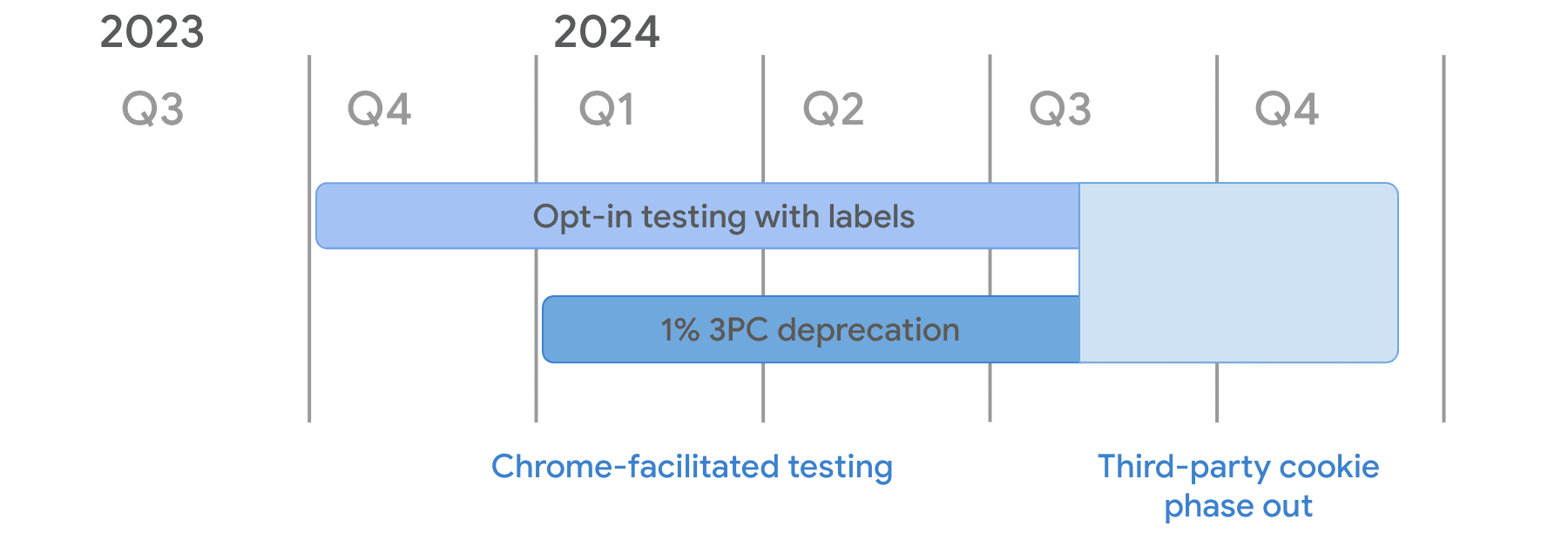
Image credit- Google
A major shift in the advertising world
Google wanted to allow publishers and advertisers ample time to get ready. Thus, the delayed launch. This will compel significant adjustments to the way digital advertising functions. Some worry that it might force websites to use more obscure tracking methods. Given how heavily the digital advertising sector depends on third-party cookie tracking, the news is probably going to cause controversy. Certain ad tech companies may lose their present capacity to gather data. Rather than being genuinely excited, the advertising industry’s anticipation can best be described as cautious skepticism. It is independent of the segment of the advertising business, be it browsers or ad tech providers.
Origin of third-party cookies
Originally, the goal of third-party cookies was to provide website users with more specialized advertisements. Rather, they evolved into something that was frequently centered on obsolete consumer behavior. To generate behavioral profiles, cookies were combined. Because of retargeting and open conversion loops, website users would still see ads for items they had previously browsed six months ago.
Read More: Google’s Phasing Out of Third-Party Cookies: A Paradigm Shift in Digital Advertising
How does the advertising world perceive this?
At the moment, the Privacy Sandbox is not a problem for any ad tech providers. Some vendors may view the partnership with Sandbox as a calculated move to remain relevant and competitive in light of Google’s strong market position. This decision was made easier by the testing grants Google is providing. That being said, some businesses aren’t as welcoming. They are unwilling to support the Sandbox as long as they believe it will further reinforce Google’s supremacy over the advertising industry.
With this first rollout, advertisers, publishers, and creators should take advantage of the chance to test and modify their strategies to effectively adjust to this change. Although the digital advertising industry has had nearly four years to plan, it is now necessary to develop flexible and adaptive approaches to determine what works and what doesn’t.
Important Alternatives to Cookies
It’s safe to say that there are a lot of interesting and complicated third-party cookie alternatives available. Shifts on this scale leave alternative identities in a constant state of change. They face difficulties with privacy compliance, interoperability, and measurement and targeting efficacy. Even the front-runners struggle with personal issues.
First-party cookies
To get ready for a world without cookies, advertisers need to gradually wean themselves off third-party data. To address this, first-party data-based solutions must be adopted, enabling advertisers to use their own, consenting user data for targeting. Instead of cookies, publishers and advertisers are experimenting with several first-party data-based solutions.
In the world of digital advertising, first-party cookies are a tactical turning point. Because they are site-specific, these cookies are ideal for meeting the requirements and preferences of different publishers and websites. Everything is connected to Google’s Privacy Sandbox program. The main focus of this large-scale project is privacy compliance. It seeks to satisfy cross-site use cases without using third-party cookies or other tracking mechanisms while balancing the needs of digital advertising with the privacy of individuals.

Image credit- Campaign Asia
Hashed emails
User email addresses are necessary for a hashed email solution to work. A user provides a wealth of identity and online behavioral data when they log in with their email address. This crucial information, which is now hidden by an encrypted identifier can be shared further up the chain with media buyers for more precise targeting. It can be pushed through a hashed email API and ensures that user data is fully secure. Ad tech companies first proposed hashed emails as a substitute for third-party cookies.
Read More: Yahoo Partners with VIOOH for prDOOH and Twilio for First-Party Ad Reach
Contextual data
One more of these alternative methods for third-party cookies is to use contextual data, which provides perspective about an online user rather than presumptive behavior. Contextual data assists advertisers in making decisions based on the content a user is currently consuming rather than previous behavior in this way. In addition to being frequently more effective, contextual data is also less expensive to obtain than third-party data. Generally speaking, contextual ad impressions are less expensive than behavioral ones. Given that the targeting is based on context and recency rather than legacy behavior, it can also aid in providing a better user experience.
APIs
Google is testing APIs. These include the “first locally executed decisions over groups experiment” (FLEDGE) and the Topics API, which have taken the place of the Privacy Sandbox’s initial federated learning of cohorts (FLoC) proposal. After analyzing a user’s three weeks of content consumption in an anonymous manner, Topics creates five “Topics” every week, one of which is sent in response to an ad request. The FLEDGE API auctions don’t rely on following users around websites because they operate directly within Chrome.
Retail Media Networks
Another cookie-less option that has emerged is retail media networks. Through these platforms, advertisers can reach more niche audiences and gain access to first-party data, including loyalty and point-of-sale data. By expanding the scope of this first-party data outside of the retailer’s owned and operated properties, RMNs assist advertisers in reaching in-market consumers without the need for cookies.
Chartering the course in the future.
The ad tech industry has entered uncharted territory with Google’s third-party deprecation. Everyone is wondering what the world will look like when the last third-party cookie disappears. There’s no denying that this ushers in a new era of digital advertising where privacy is crucial. Publishers will need to adjust to first-party cookies and other practices like hashed emails, and advertisers will move toward more content-based and contextual approaches.
Businesses of all sizes will need to be inventive and flexible to succeed in this new era. This entails making investments in fresh platforms and technologies that can adapt to the change and create new opportunities for efficient audience targeting without compromising user privacy. It’s not all bad news, though. A plethora of prospects lie ahead of us. Recall that in the cookie-less future, flexibility is essential.
Read More: GroupM and Google Announce Post Third-Party Cookie Readiness Program

